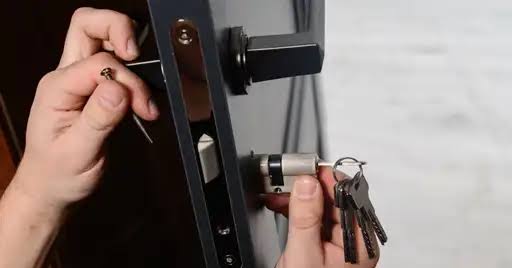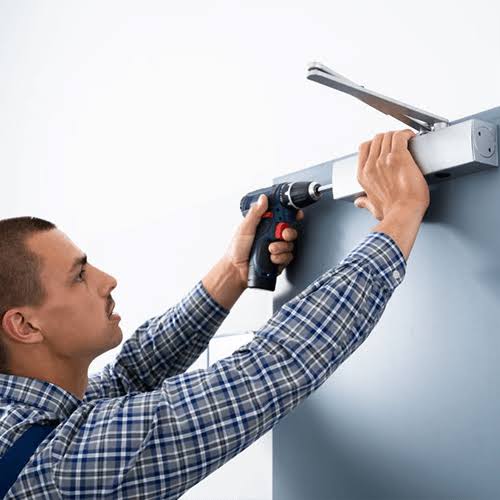Introduction
Interior painting seems like one of the easiest home projects to take on. Pick a color, grab a brush, and transform the space—right? In reality, painting the inside of a home is as much about preparation and planning as it is about application. Many homeowners underestimate how technical and strategic this process can be.
A few simple mistakes can lead to costly do-overs, wasted materials, or even long-term damage to walls, trim, or furniture. From choosing the wrong finish to skipping vital prep work, avoidable missteps can turn what should be a straightforward project into a frustrating (and expensive) experience.
Whether you’re refreshing a single room or undertaking a whole-home update, understanding the most common interior painting pitfalls helps ensure your time and effort pay off. A well-painted space isn’t just visually appealing—it contributes to the comfort, functionality, and value of your home.
Mistake #1: Rushing Through Preparation
Painting isn’t just about color—it’s about surface. The best-looking finish comes from thoughtful prep, and skipping it is the fastest way to sabotage your results.
Walls that are dirty, glossy, or textured in patches will repel paint or cause uneven absorption. Dust, grease, and residue act as a barrier between the surface and the paint. Glossy areas prevent proper adhesion, while unpatched holes or cracks create visible flaws once the paint dries.
Avoid it by:
- Cleaning all surfaces thoroughly with a mild detergent and water
- Sanding glossy finishes to create texture
- Patching holes, smoothing edges, and caulking gaps
- Priming patched or stained areas for consistent coverage
The time spent prepping is never wasted—it’s what separates an amateur job from a professional-looking one.
Mistake #2: Skipping Primer When It’s Needed
Many modern paints include primer in their formula, but that doesn’t make them suitable for all surfaces. Primers aren’t just for new drywall—they’re essential when covering dark colors, sealing stains, or painting over porous surfaces.
Without proper priming, you may need extra coats to achieve full coverage—or worse, experience peeling or uneven drying.
Know when to prime:
- When switching from dark to light colors
- On patched or repaired walls
- Over water stains or smoke damage
- On raw drywall or bare wood
If you’re not sure, err on the side of caution. A coat of primer now saves time, money, and frustration later.
Mistake #3: Using the Wrong Finish for the Space
Paint finish matters just as much as color. Each sheen interacts differently with light, texture, and wear. Choosing the wrong one can leave you with surfaces that look off, show every imperfection, or wear out too fast.
Finish guide by function:
- Flat or matte: Best for low-traffic areas like bedrooms; hides imperfections but hard to clean.
- Eggshell or satin: A balance between durability and softness; ideal for living rooms, hallways, and dining areas.
- Semi-gloss or gloss: Durable and easy to clean; best for kitchens, bathrooms, trim, and doors.
Glossy paints reflect more light, which can amplify uneven surfaces or poor roller technique. Understanding where and why to use each finish can prevent mismatched rooms and premature repaints.
Mistake #4: Choosing Paint Colors Without Testing Them First
Lighting, room size, and existing materials all influence how paint color appears on the wall. A color that looks soft and subtle on a swatch may appear too bright or dull in the actual room. It’s also common to underestimate how much natural light or artificial lighting can shift a paint’s tone.
Avoid color regret by:
- Testing multiple samples on different walls
- Observing them at different times of day
- Comparing them against furniture, flooring, and trim
- Viewing swatches both in natural and artificial light
Interior painting is part science, part art—and color selection deserves real-world testing before committing to gallons of paint.
Mistake #5: Poor Quality Tools and Materials
Paint is only as good as the tools used to apply it. Cheap brushes shed bristles, and low-quality rollers leave streaks, bubbles, or uneven textures. Inferior painter’s tape can lead to messy edges or bleed-through.
Cutting corners on materials often leads to double the labor and disappointing results.
Invest in:
- High-quality brushes for trim and detail work
- Smooth, lint-free rollers for walls and ceilings
- Painter’s tape rated for clean removal
- Paint with the appropriate sheen and performance specs
An experienced painting company will always recommend tools based on surface type, paint brand, and finish goals.
Mistake #6: Failing to Protect Furniture and Floors
Spilled paint or accidental splatter can damage flooring, countertops, or furniture—sometimes permanently. Even tiny droplets can leave marks on hardwood or upholstery that are hard to remove.
Protect your surroundings by:
- Clearing as much furniture from the room as possible
- Covering everything else with drop cloths or plastic sheeting
- Using edge guards, tape, and floor runners
Preparation doesn’t stop at the wall—it extends to every corner of the workspace.
Mistake #7: Painting in the Wrong Conditions
Temperature and humidity affect how paint dries. If the room is too cold, the paint won’t cure properly. If it’s too hot or humid, it may dry too quickly, leading to streaks or a rough finish.
Best painting conditions:
- Temperature between 60°F and 75°F
- Moderate humidity levels
- Good airflow without direct drafts
Close windows in extremely humid weather or use dehumidifiers in bathrooms and kitchens if necessary. Drying conditions affect both the durability and appearance of the final coat.
Mistake #8: Not Planning for Clean Lines and Transitions
Clean transitions between walls, ceilings, baseboards, and doorways define a well-done interior paint job. Without attention to detail, you’ll end up with fuzzy edges or color overlap that cheapens the look of the room.
Achieve clean lines by:
- Using high-quality painter’s tape and removing it at the right time
- Taping off all trim, outlets, and light switches
- Applying careful brushwork around edges and corners
Even a beautifully painted wall looks unprofessional if the edges are messy or inconsistent.
Mistake #9: Underestimating the Project Timeline
One of the biggest frustrations in interior painting is underestimating how long it will take. Rushing leads to skipped prep, sloppy application, and regret.
Avoid time traps by:
- Factoring in prep, drying time between coats, and cleanup
- Painting one room at a time, especially if you’re living in the space
- Scheduling around daily routines to minimize disruption
A rushed job often requires touch-ups—or a complete do-over—making it more expensive than taking the time to do it right the first time.
Grandview Painting encourages homeowners to treat interior painting as a process, not just a project. Smart planning and attention to detail are what make a transformation both lasting and satisfying.
Conclusion
Interior painting is deceptively complex. While it may appear to be a straightforward weekend task, every brushstroke is affected by planning, materials, technique, and environment. The smallest mistakes—skipped primer, bad lighting, or the wrong finish—can diminish both the appearance and durability of your results.
By recognizing and avoiding the most common pitfalls, homeowners can ensure that their interior painting efforts lead to clean, professional-looking outcomes that stand the test of time. Paint may be temporary in theory, but done right, its effect is lasting.
Whether you’re updating one room or redefining your entire space, taking time to do it properly protects your investment—and helps your home feel as good as it looks.



